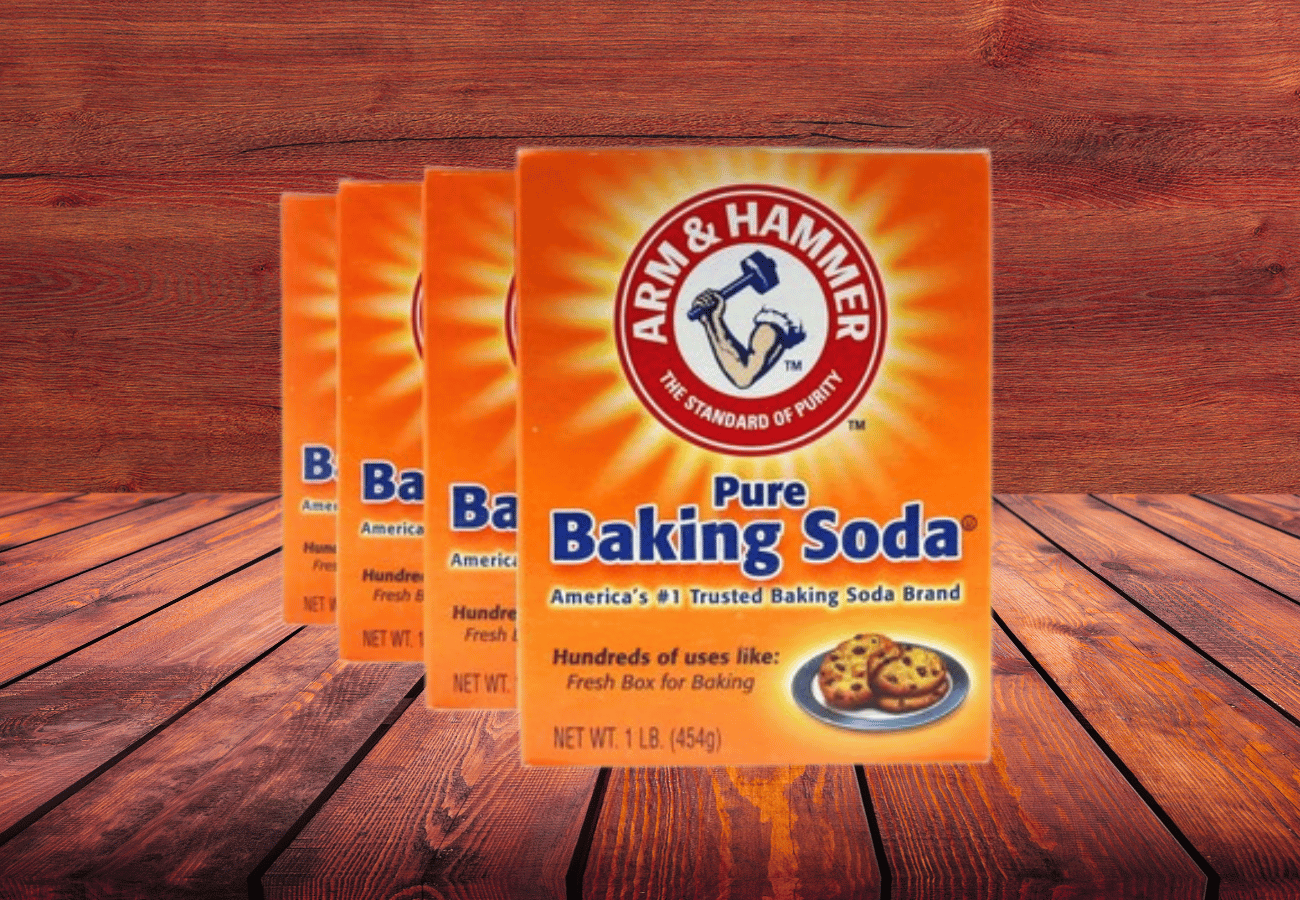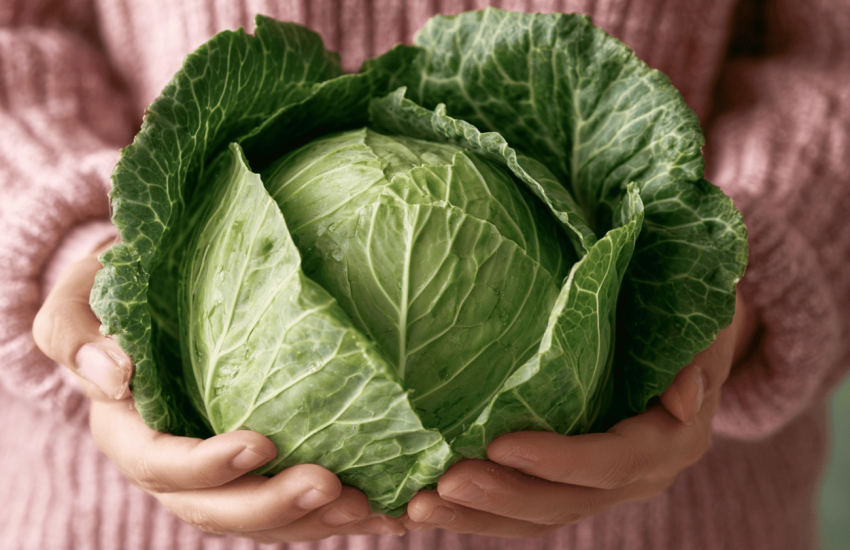Every Woman Should Know These 15 Amazing Soda Tricks — Bake Like a Pro!
Meta Description: Discover 15 game-changing soda tricks for perfect baking. Master homemade soda recipes with expert tips that transform your kitchen skills.
Introduction: Unlock the Secret Power of Baking Soda
Walk into any grandmother’s kitchen, and you’ll likely find a humble orange box of baking soda tucked away in the pantry. This unassuming white powder is one of the most versatile ingredients in your kitchen, yet many of us barely scratch the surface of its potential. Beyond just leavening bread, baking soda holds remarkable secrets that can revolutionize your baking, improve your health, and simplify your life.
For generations, women have relied on simple soda tricks to create delicious homemade breads, cakes, and pastries. But the benefits extend far beyond the oven. From supporting digestive health to enhancing the nutritional value of your baked goods, understanding how to work with baking soda properly can transform both your culinary skills and your wellness routine.
Whether you’re exploring traditional soda recipes for the first time or looking to refine techniques you already know, these 15 expert soda baking secrets will elevate your confidence in the kitchen. You’ll discover why this simple ingredient deserves a starring role in your healthy lifestyle and how mastering these quick soda tips can make you feel like a professional baker in your own home.
Understanding Baking Soda: The Science Behind the Magic
Before diving into our collection of easy soda bread tricks, it’s important to understand what makes baking soda such a powerful ingredient. Chemically known as sodium bicarbonate, baking soda is an alkaline compound that reacts with acidic ingredients to produce carbon dioxide gas. This reaction creates the bubbles that make baked goods rise and develop their characteristic light, airy texture.
The beauty of baking soda lies in its immediate action. Unlike yeast, which requires time and warmth to activate, baking soda begins working the moment it encounters moisture and acid. This makes it perfect for quick breads, muffins, pancakes, and the beloved Irish soda bread that has nourished families for centuries.
Understanding this chemistry helps you become a better baker. When you know why ingredients work together, you can troubleshoot problems, adapt recipes, and even create your own variations with confidence.
15 Essential Soda Tricks Every Woman Should Master
1. Always Pair Baking Soda with Acid
The most fundamental of all soda bread tips involves understanding the critical partnership between baking soda and acidic ingredients. Baking soda needs an acid to activate properly. Common acidic partners include buttermilk, yogurt, lemon juice, vinegar, honey, molasses, or even brown sugar.
When these ingredients combine, they create a chemical reaction that produces carbon dioxide bubbles, giving your baked goods the lift they need. Without adequate acid, your bread will taste soapy and metallic, and it won’t rise properly. This basic principle underlies all successful homemade soda recipes, making it the foundation of great baking.
For optimal results, aim for a ratio of about one quarter teaspoon of baking soda per cup of acidic liquid. This balance ensures complete neutralization, resulting in better flavor and texture while avoiding any unpleasant alkaline aftertaste.
2. Test Your Baking Soda’s Freshness
One of the most overlooked baking soda hacks involves checking whether your powder is still potent. Baking soda loses effectiveness over time, especially if exposed to moisture or air. Using expired or weakened baking soda results in flat, dense baked goods that never reach their full potential.
Test your baking soda by adding half a teaspoon to a small amount of vinegar or lemon juice. Fresh baking soda will bubble vigorously and immediately. If the reaction is weak or slow, it’s time to replace your box. This simple test takes seconds but can save you from baking disappointments.
For best results, replace your baking soda every six months to a year. Store it in an airtight container in a cool, dry place to maintain maximum potency. Write the opening date on the box so you always know when it’s time for a fresh supply.
3. Mix Dry Ingredients Thoroughly Before Adding Liquids
Professional bakers know that proper mixing technique is one of the best soda bread techniques for consistent results. Always combine your baking soda with other dry ingredients first, whisking thoroughly to distribute it evenly throughout the flour mixture.
This step prevents pockets of concentrated baking soda in your finished product, which can create an unpleasant taste and uneven rise. Spend at least 30 seconds whisking your dry ingredients together. This extra attention ensures every bite of your bread or cake has perfectly balanced flavor and texture.
Sifting dry ingredients together provides even better distribution, especially for delicate cakes and pastries. While not always necessary for rustic breads, this technique produces noticeably superior results in finer baked goods.
4. Add a Pinch to Boost Digestive Comfort
Beyond baking, baking soda offers remarkable health benefits, particularly for digestive wellness. A small amount mixed into certain recipes can help neutralize stomach acid and reduce digestive discomfort for those with sensitive systems. This makes baking soda not just a leavening agent but a functional ingredient that supports gut health.
When making pancakes, muffins, or quick breads, the natural buffering properties of baking soda can make these foods gentler on your digestive system. This is especially helpful for people who experience occasional heartburn or acid reflux. The key is balance: enough to provide digestive benefits without affecting taste.
However, those with high blood pressure or on sodium-restricted diets should be mindful of baking soda’s sodium content. Always consult with your healthcare provider if you have specific dietary concerns or health conditions.
5. Create Fluffier Pancakes and Waffles Instantly
Transform your weekend breakfast with this quick soda tip: add a quarter teaspoon of baking soda to your pancake or waffle batter along with your usual baking powder. This combination creates extra lift, resulting in incredibly fluffy, cloud-like pancakes that rival any restaurant’s offerings.
The trick works because baking soda reacts immediately with any acidic ingredients in your batter (like buttermilk or yogurt), creating instant bubbles. These bubbles get trapped in the batter as it cooks, creating those desirable air pockets that make breakfast cakes so delightfully light and tender.
For best results, don’t overmix your batter once the baking soda is added. Gentle folding preserves those precious bubbles, ensuring maximum fluffiness. Cook immediately after mixing, as the leavening action begins right away and you don’t want to lose those bubbles before the batter hits the hot griddle.
6. Enhance Browning for Beautiful Golden Crusts
One of the lesser-known soda baking secrets involves baking soda’s ability to promote browning. The alkaline environment it creates encourages the Maillard reaction, a chemical process that creates those gorgeous golden-brown colors and deep, complex flavors we love in baked goods.
Add a tiny pinch (about 1/8 teaspoon) of baking soda to pretzel dough, bagels, or even roasted vegetables to achieve professional-looking browning. This technique is especially valuable when baking with whole grain flours, which can sometimes produce pale-looking loaves despite being fully cooked.
Be careful not to overdo it, as too much baking soda can create an unpleasant taste and overly dark color. The goal is subtle enhancement, not dramatic change. When used correctly, this trick makes your homemade creations look as impressive as they taste.
7. Tenderize Whole Grain Baked Goods
Whole grain flours provide excellent nutrition but can sometimes produce dense, heavy textures. Here’s where understanding soda bread for beginners becomes particularly valuable: a small amount of baking soda can help tenderize whole grain doughs, making them lighter and more palatable without sacrificing nutritional benefits.
The alkaline nature of baking soda helps break down some of the tougher proteins in whole wheat flour, resulting in a softer crumb. This makes whole grain breads, muffins, and scones more appealing, especially for family members who typically prefer refined flour products.
Combine this trick with proper hydration and adequate mixing time for optimal results. Whole grain flours absorb more liquid than white flour, so allowing your dough to rest for 10-15 minutes before baking helps the flour fully hydrate, producing even better texture.
8. Never Mix Baking Soda and Baking Powder… Unless You Know Why
Understanding when to use baking soda versus baking powder is crucial for mastering traditional soda recipes. While they’re both leavening agents, they work differently. Baking soda requires an acid to activate, while baking powder contains both an acid and a base, making it self-sufficient.
Some recipes call for both because they serve different purposes. Baking powder provides sustained rise throughout baking, while baking soda offers immediate action and contributes to browning. When a recipe contains acidic ingredients but needs extra lift, using both creates the perfect balance.
However, randomly adding baking soda to a recipe designed for baking powder alone will throw off the chemistry, resulting in poor texture and unpleasant metallic flavors. Always follow your recipe’s specifications, understanding that the ratios have been carefully calculated for optimal results.
9. Rescue Acidic Tomato Sauces and Soups
Extend your soda tricks beyond baking by using this helpful kitchen hack: a tiny pinch of baking soda can neutralize excess acidity in tomato-based sauces and soups. If your marinara tastes too sharp or causes heartburn, stir in just an eighth of a teaspoon of baking soda while cooking.
Watch for the immediate bubbling as the baking soda neutralizes the acid. The sauce will taste smoother and more balanced, with less likelihood of causing digestive discomfort. This trick is particularly helpful for people with sensitive stomachs who want to enjoy tomato-based dishes without consequences.
Start with a very small amount and taste before adding more. Too much baking soda can make your sauce taste flat or slightly soapy. The goal is subtle balance, not complete acid neutralization. When done correctly, your sauce maintains its bright tomato flavor without the harsh acidic edge.
10. Pre-Soak Beans for Better Digestion
Here’s a wellness-focused soda trick that supports digestive health: add a teaspoon of baking soda to the soaking water when preparing dried beans. This simple addition helps break down complex sugars that can cause gas and bloating, making beans easier to digest and more comfortable to eat.
The alkaline environment created by baking soda also helps soften bean skins faster, reducing cooking time and resulting in creamier textures. This makes beans more appealing in everything from homemade breads to soups and side dishes.
Rinse the beans thoroughly after soaking to remove any residual baking soda before cooking. This ensures your beans have great flavor without any chemical aftertaste. This technique is especially helpful for people who avoid beans due to digestive discomfort, allowing them to enjoy the significant nutritional benefits beans provide.
11. Create Tender Baked Goods with Acidic Fruits
When incorporating acidic fruits like berries, apples, or rhubarb into muffins and cakes, adjust your leavening by favoring baking soda over baking powder. The natural acids in fruits activate the baking soda, creating rise while the fruit adds moisture and natural sweetness.
This is one of those best soda bread techniques that works particularly well in healthy baking. Fruit naturally reduces the need for added sugar while providing vitamins, antioxidants, and fiber. The baking soda ensures your healthy treats still have excellent texture despite lower fat and sugar content.
Fold fruits gently into your batter at the end of mixing to prevent them from breaking down and releasing too much juice. This preserves the distinct texture of the fruit pieces while ensuring even distribution throughout your finished baked goods.
12. Make Homemade Self-Rising Flour
Save money and cupboard space by creating your own self-rising flour using this practical soda hack. For every cup of all-purpose flour, add one and a half teaspoons of baking powder and one-quarter teaspoon of salt. Mix thoroughly and store in an airtight container.
While this doesn’t include baking soda alone, understanding the proper ratios helps you adapt recipes and troubleshoot baking issues. When a recipe calls for self-rising flour but you only have all-purpose, this formula ensures success without a special grocery store trip.
This knowledge is particularly valuable when exploring homemade soda recipes from older cookbooks that assume you’re working with certain standard ingredients. Being able to recreate these formulations gives you flexibility and control over your baking ingredients.
13. Neutralize Kitchen Odors Naturally
While not directly related to baking, this soda trick enhances your kitchen environment. Keep an open box of baking soda in your refrigerator to absorb food odors, and sprinkle it in your sink or garbage disposal to neutralize unpleasant smells naturally.
A clean, fresh-smelling kitchen makes baking more enjoyable and creates a healthier cooking environment. Unlike artificial air fresheners that can contain concerning chemicals, baking soda provides odor control without adding any fragrances or potentially harmful substances to your home.
Replace the odor-absorbing box every three months, but don’t throw the old baking soda away. Use it for cleaning sinks, tubs, and counters. This sustainable approach maximizes the value of every box while supporting a more natural, chemical-free home environment.
14. Balance pH for Healthier Baked Beans
Create healthier, more digestible baked beans by adding a quarter teaspoon of baking soda to your cooking liquid. This adjusts the pH balance, helping to break down beans more thoroughly while reducing compounds that cause digestive distress.
This technique is rooted in traditional cooking wisdom that has been passed down through generations. Our grandmothers understood intuitively what science now confirms: adjusting pH during cooking makes foods more bioavailable and easier for our bodies to process and absorb nutrients from.
The result is beans that are creamy inside, with intact skins and rich flavor. Whether you’re making Boston baked beans, cowboy beans, or vegetarian chili, this small addition makes a noticeable difference in both texture and digestibility.
15. Extend Freshness with Proper Storage
Protect your investment in quality baking ingredients by storing baking soda properly. Keep it in an airtight container away from moisture, heat, and strong odors. Moisture activates baking soda prematurely, reducing its effectiveness when you need it for baking.
Consider transferring baking soda from its original cardboard box to a glass jar with a tight-fitting lid. Label it clearly with the purchase or opening date so you always know its age. This simple organizational step ensures you’re always working with potent, effective baking soda.
Store your baking soda away from spices and other aromatic ingredients, as it can absorb odors over time. A cool, dark cupboard away from the stove is ideal. These easy soda bread tricks for storage seem minor but make a significant difference in your baking results.
Health Benefits of Incorporating Baking Soda Wisely
When used appropriately in cooking and baking, baking soda offers several health advantages. Its alkalizing properties can help balance dietary acidity, potentially supporting better pH balance in the body. This may benefit people who consume diets high in acidic foods like meat, dairy, and processed items.
Baking soda’s ability to make beans and legumes more digestible encourages increased consumption of these fiber-rich, protein-packed foods. This supports heart health, digestive function, and stable blood sugar levels. Making plant-based proteins more comfortable to eat helps people naturally shift toward more balanced, nutritious diets.
The digestive benefits extend to reducing occasional heartburn and indigestion when baking soda is used moderately in recipes. While not a substitute for medical treatment, these gentle effects support overall digestive comfort for many people. Always consume baking soda as part of food rather than drinking it directly, unless specifically directed by a healthcare provider.
Common Mistakes to Avoid with Baking Soda
Even with the best intentions and knowledge of soda tricks, certain mistakes can undermine your results. Using too much baking soda is perhaps the most common error. More is not better; excess baking soda creates a soapy, metallic taste and can actually inhibit rise rather than enhance it.
Another frequent mistake involves adding baking soda to recipes that don’t contain acidic ingredients. Without acid to react with, baking soda can’t produce the rise you need, and it leaves behind an unpleasant alkaline flavor. Always ensure your recipe includes buttermilk, yogurt, citrus, vinegar, honey, or another acidic component.
Waiting too long between mixing and baking also diminishes results. Since baking soda begins reacting immediately when it contacts acid and moisture, delays mean lost leavening power. Mix your ingredients efficiently and get your batter or dough into the oven promptly for optimal rise and texture.
Creating a Healthier Kitchen with Natural Ingredients
Mastering these quick soda tips supports a broader commitment to natural, wholesome cooking. When you understand how simple ingredients like baking soda work, you feel empowered to make more of your food from scratch, reducing reliance on processed, packaged items filled with preservatives and additives.
Homemade baking allows you to control exactly what goes into your food. You can adjust sugar levels, incorporate whole grains, add nutritious seeds and nuts, and avoid artificial ingredients entirely. This transparency supports better health for you and your family while often saving money compared to premium bakery items.
The confidence that comes from mastering these techniques encourages experimentation and creativity in the kitchen. You become more adventurous, trying new recipes and developing your own variations. This engagement with food preparation nurtures a healthier relationship with eating and nourishment.
Teaching These Skills to the Next Generation
These traditional soda recipes and techniques represent valuable knowledge worth passing down. Teaching children and young adults how to bake from scratch provides them with life skills that support independence, creativity, and health. Time spent together in the kitchen creates lasting memories while building competence and confidence.
Start with simple projects like muffins or biscuits that come together quickly and reward effort with delicious results. As skills grow, progress to more complex items like layered cakes or artisan breads. The progression from basic to advanced mirrors the learning process itself, building mastery gradually.
Share the science behind the baking along with the practical techniques. Understanding why ingredients work the way they do transforms following recipes into true cooking knowledge. This deeper comprehension enables problem-solving, adaptation, and genuine expertise rather than mere recipe-following.
Conclusion: Transform Your Kitchen with Simple Soda Secrets
These 15 soda tricks represent a gateway to more confident, capable, and healthy baking. From understanding the basic chemistry of how baking soda works to applying advanced techniques that enhance nutrition and flavor, these skills empower you to take control of what you and your family eat. The simple act of mastering baking soda’s potential ripples outward, influencing your entire approach to food and wellness.
Remember that becoming proficient takes practice and patience. Not every loaf will be perfect, but each attempt teaches valuable lessons that refine your skills. The investment in learning these techniques pays dividends for years to come, supporting better health, greater kitchen confidence, and the deep satisfaction that comes from creating nourishing food with your own hands.
Whether you’re just beginning to explore soda bread for beginners or looking to enhance skills you already possess, these proven methods provide a solid foundation for baking success. The beauty of these traditional techniques lies in their simplicity and reliability. They’ve been tested through generations because they work consistently, producing delicious results that nourish body and soul.
Take Charge of Your Health Today
Take care of your health by adopting these simple baking habits that support wellness from the inside out. Start this week by trying one new technique from this guide. Whether it’s testing your baking soda’s freshness, experimenting with whole grain flours, or making your first loaf of homemade soda bread, each small step builds toward greater kitchen competence and better health.
The power to nourish yourself and your loved ones naturally sits right in your pantry, in that humble box of baking soda. By unlocking its full potential, you join countless generations of women who have used simple ingredients to create extraordinary comfort, nutrition, and care. Your journey to becoming a more confident, capable baker starts now.
SEO Tags/Keywords: soda tricks, soda bread tips, baking soda hacks, homemade soda recipes, easy soda bread tricks, quick soda tips, soda baking secrets, traditional soda recipes, soda bread for beginners, best soda bread techniques



